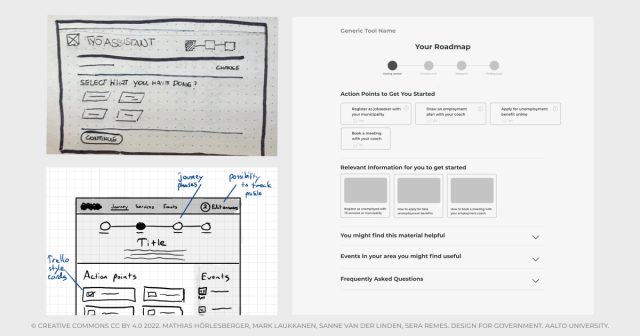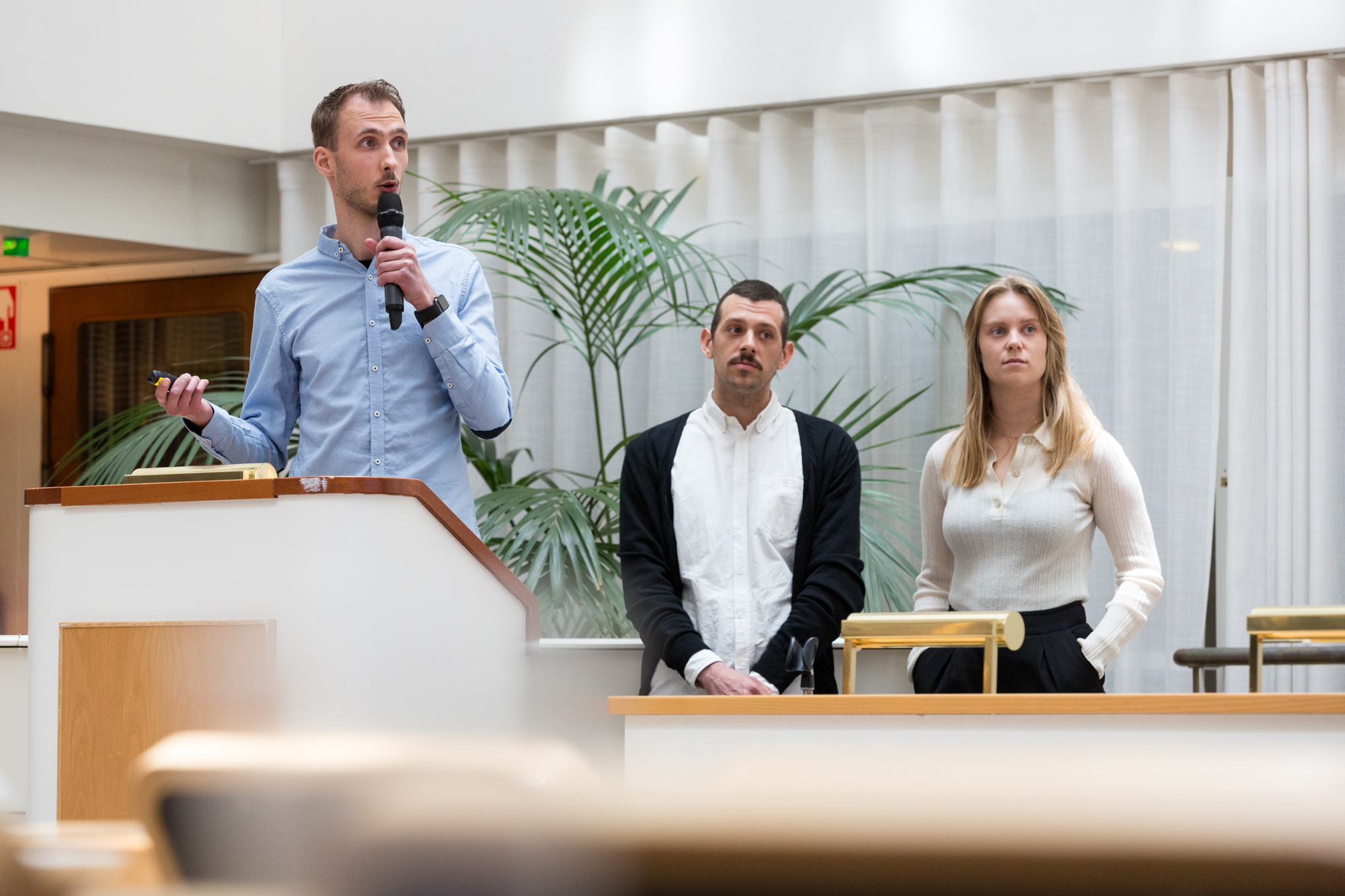This blog post reports on work-in-progress within the DfG course! The post is written by group 2C dealing with the Ministry of Finance’s brief on Employment services reform. The group includes Mathias Leopold Hörlesberger from the New Media Design and Production program, Mark Laukkanen from the Information Networks program, Sanne van der Linden from the Creative Sustainability program, and Sera Remes from the Collaborative and Industrial Design program.
Written by: Mark Laukkanen
Around the time of our previous blog post, our group settled on a personalised roadmap tool as our chosen design intervention to support international jobseekers in Finland. In the final weeks of the course, our attention turned to defining this proposal more comprehensively and preparing to present our efforts in the Final Show. While these initially seemed like two distinct activities, I soon came to realize that preparing for the presentation could in fact help us also in developing the proposal itself.
Details matter, until they don’t
We had settled on proposing a tool similar to carbon footprint calculators and other such services, where users fill in details about themselves and are then provided personalised results based on the filled questionnaire. In the context of our brief, this would mean a jobseeker filling in details about their life situation, professional experience and more, and then being provided a personalised roadmap that would guide them on their journey towards employment. While the general shape of our proposal was clear, it was necessary to define and develop it further to make it more tangible and more likely to be implemented.
As such, we began brainstorming possible features and content of the tool and spent time prioritising these ideas based on how much effort their implementation would likely take and how valuable they would be. To further make sense of the possible structure and functioning of our tool, we also created some wireframes, drawing inspiration from various benchmarked questionnaires and calculator tools. The wireframes crucially also enabled us to better discuss our concept with two experts from Kela and four international jobseekers, thus allowing us to gather feedback and validate the direction we were going in.
In all of these efforts, a central challenge we seemed to face was the question of fidelity – to what level of detail should we take our proposal? With myself and also others in the group having experience with detailed user experience (UX) and user interface (UI) design of digital services, it was tempting to get caught up in the minute details of the tool’s possible interface and all of the tool’s features. It took some intentionality to keep questioning what details mattered and which ones were irrelevant for the purposes of our project. We found ourselves dabbling on various levels of fidelity, often feeling a bit unsure about where the limits should be.

Figure 1. Multiple wireframe iterations of the proposed roadmap tool.
Presentations as a tool for thinking
Due to the tight schedule of the course, we had to move on to preparing our final presentation even as some dimensions of our proposal and these questions regarding level of detail were still unclear. This went against my own preconceptions of first attempting to have everything figured out and only then starting to think about presenting. However, this progression of events turned out to be a blessing in disguise. Indeed, the process of trying to take all of our efforts in the past three months and crystallise them into a 15 minute presentation, turned out to be just the exercise we needed to also hone and finalise our design proposal. For example, writing stories about users interacting with the proposed tool was just as much about us exploring our proposal and making sense of how it might be useful, as it was about preparing to communicate that usefulness in a presentation to those outside of our team.
Overall, preparing our final presentation sharpened our thinking and proposal in at least two ways. Firstly, it helped us validate whether what we were about to propose was relevant and made any sense. For example, taking the stories we had written and presenting them to a rehearsal audience, immediately made us relate to our own words differently. It helped us calibrate the level of fidelity in our proposal, by making us realize that talking about technical details like QR codes felt irrelevant in comparison to the higher level of how the tool would impact the lives of international jobseekers. Secondly, presentation preparations helped point out holes in our arguments and highlighted things we had perhaps forgotten to properly think about. For example, knowing that we were about to present to representatives from a range of organisations, reminded us to think beyond just the tool and its feature set and more about the ownership of the tool as well its various entry points and possible next steps for implementation.

Figure 2. A slide from our final presentation covering tool ownership and entry points – something that fully came into focus only through the process of preparing our presentation.
One last opportunity…
It has been said (commonly attributed to Bill Wheeler) that “good writing is clear thinking made visible”. Based on our experience, this would seem to apply to presentations as well. Just like writing, preparing a presentation forces one to clarify and sharpen their thoughts and can thus function as a tool for thinking. This is something I want to take with me to any future projects: to not be afraid of jumping into presentation preparations even if my thoughts are still unclear, but remembering that the very act of preparing a presentation may be just what I need to crystallise those thoughts.
Fittingly, the last step in our project is to write a final report. While this may primarily be about documenting our efforts, it is also no doubt one last opportunity for our thoughts to be clarified.
The DfG course runs for 14 weeks each spring – the 2022 course has now started and runs from 28 Feb to 23 May. It’s an advanced studio course in which students work in multidisciplinary teams to address project briefs commissioned by governmental ministries in Finland. The course proceeds through the spring as a series of teaching modules in which various research and design methods are applied to address the project briefs. Blog posts are written by student groups, in which they share news, experiences and insights from within the course activities and their project development. More information here about the DfG 2022 project briefs.

